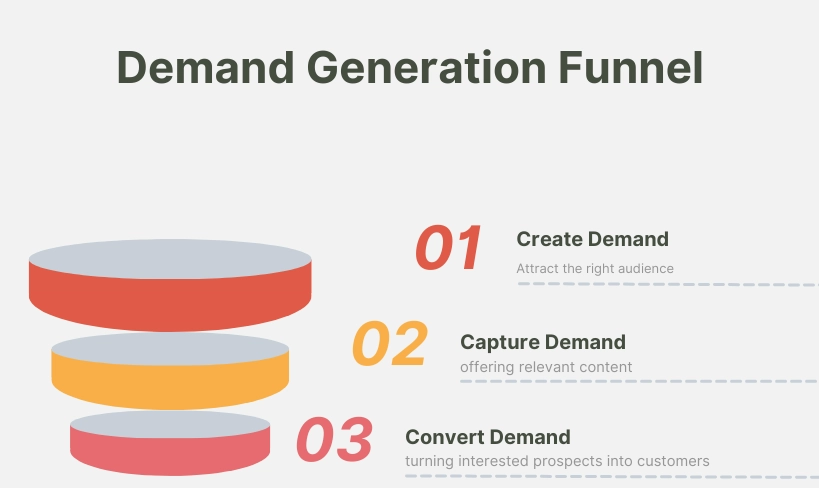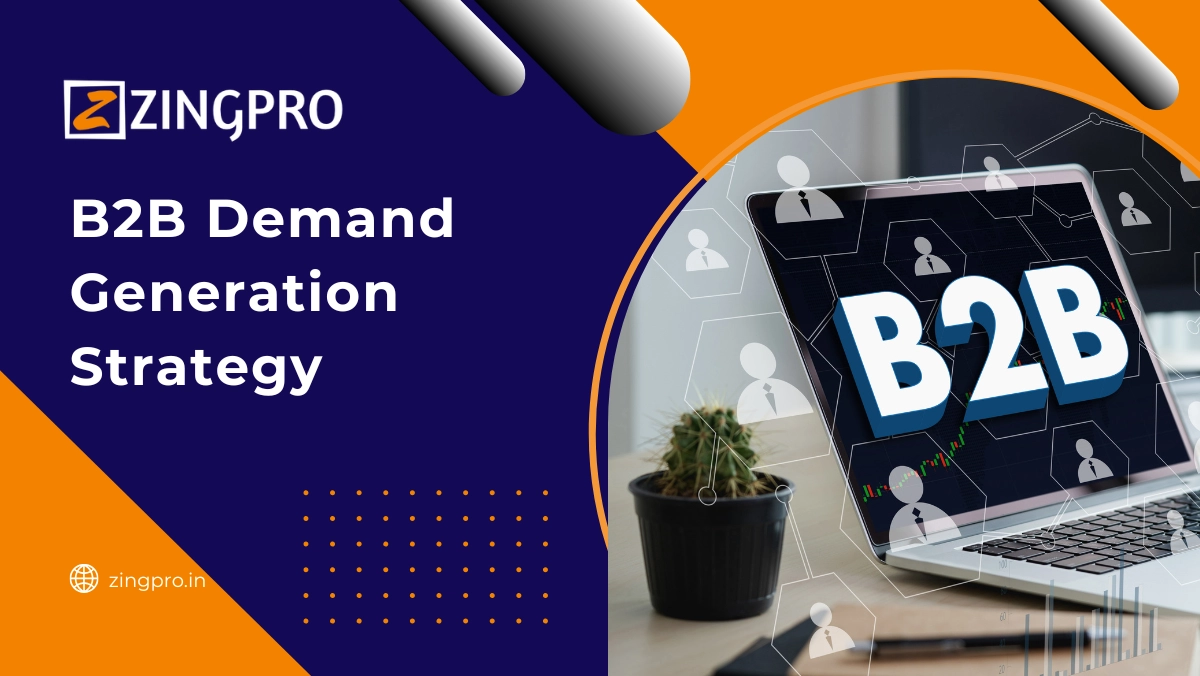A solid B2B demand generation strategy is essential for attracting quality leads and driving growth in the competitive business-to-business world. Demand generation goes beyond traditional lead generation by creating awareness, building interest, and nurturing potential buyers toward a final decision. In this guide, we’ll cover effective strategies and tactics to build demand and sustain engagement in B2B markets.
Understanding B2B Demand Generation and Its Importance
Demand generation aims to educate and engage your target audience about your products or services, creating awareness and interest that lead to new business. With the right B2B demand generation strategy, you’ll attract and nurture potential customers until they’re ready to make a buying decision.
Key Objectives of Demand Generation
- Increase Brand Awareness: Make your brand known in your industry and build credibility.
- Generate Quality Leads: Focus on attracting the right type of customers for your business.
- Nurture Leads to Conversion: Through valuable content and consistent communication, you guide potential leads through the buying process.
Effective demand generation begins with targeting potential customers and providing them with relevant information to address their needs, making it an essential aspect of best lead generation for B2B.
5 Components of an Effective B2B Demand Generation Strategy
A B2B demand generation strategy focuses on creating awareness and interest in your product or service among potential clients. It aims to attract qualified leads, nurture them, and guide them toward making a purchasing decision. The five components of an effective B2B demand generation strategy are:

- Awareness: This is the first stage where you introduce your brand to potential clients. Effective lead generation tactics B2B at this stage may include content marketing, social media campaigns, and webinars to raise awareness.
- Interest: After creating awareness, the next step is to generate interest. Here, the best lead generation for B2B tactics includes offering valuable resources like ebooks, case studies, or free consultations that align with the prospects’ challenges.
- Consideration: At this stage, prospects are evaluating your offerings. Providing targeted content and personalized outreach helps nurture leads. Utilizing lead nurturing campaigns is one of the most effective B2B lead generation tactics, fostering engagement over time.
- Conversion: This is where you turn interested leads into customers. Implementing strategic calls-to-action, demos, and product trials effectively captures demand and accelerates decision-making.
- Retention: After conversion, retaining clients through exceptional customer service and ongoing communication is key to sustaining long-term success in your demand generation efforts.
These five components form the foundation of a robust demand generation funnel, making it essential to employ tactics that effectively create, capture, and convert demand.
Content Marketing: Fueling Your Demand Generation Efforts
Content marketing is a foundational aspect of a B2B demand generation strategy. High-quality content, such as blog posts, case studies and e-books, attracts potential customers, informs them, and builds trust.
Types of Content for Demand Generation
- Blog posts and articles: Answer questions potential customers may have, positioning your brand as an industry expert.
- Case Studies: Showcase successful projects to build credibility and trust.
- E-books and White Papers: Provide in-depth insights that appeal to customers who want detailed information before making a decision.
With consistent, valuable content, you can become a go-to resource in your industry, which is often considered one of the most effective B2B lead generation tactics for long-term results.
Targeted Email Marketing Campaigns for Lead Nurturing
Email marketing remains a powerful tool for B2B demand generation, allowing you to maintain communication with potential leads. Unlike general advertising, email marketing allows for more personalized, targeted messaging, helping to nurture leads through the buying journey.
How to Use Email in Your B2B Demand Generation Strategy
- Segmentation: Divide your email list into segments based on interests, industry, or buying stage for tailored messaging.
- Personalization: Address recipients by name and customize content to their specific needs or challenges.
- Automated drip campaigns: Use automation to send a series of emails over time, gradually providing more information to nurture interest.
By personalizing and segmenting emails, businesses can create a lead generation tactic for B2B that builds strong relationships and keeps leads engaged.
Leveraging LinkedIn for Targeted B2B Lead Generation
LinkedIn is a top platform for B2B professionals, making it ideal for demand generation. Using LinkedIn’s advertising options, networking features, and content-sharing capabilities, you can connect with potential leads and engage with them over time.
LinkedIn Strategies for Demand Generation
- Sponsored Content: Promoted posts that reach specific audiences based on job title, industry, and more.
- LinkedIn Ads: Directly target decision-makers who might benefit from your product or service.
- Networking and Outreach: Connect with industry professionals and share valuable insights to build relationships.
By using LinkedIn effectively, businesses can engage with their target audience, making it one of the best lead generation methods for B2B methods to connect with qualified prospects.
Demand Generation Funnel: Create Demand, Capture Demand, and Convert Demand
- Create Demand
- Attract the right audience through content marketing, SEO, and social media.
- Use lead generation tactics B2B like targeted ads, webinars, and valuable resources.
- Best lead generation for B2B strategies at this stage include raising awareness and positioning your brand as a thought leader.
- Capture Demand
- Engage prospects by offering relevant content tailored to their needs.
- Collect lead information through forms, gated content, and landing pages.
- Use most effective B2B lead generation tactics like case studies, whitepapers, and free trials to capture interest and deepen engagement.
- Convert Demand
- Nurture leads with personalized outreach, product demos, and strong calls to action.
- B2B demand generation strategy in this stage focuses on turning interested prospects into customers.
- Best lead generation for B2B at this point includes personalized emails, consultations, and focused support to guide decision-making.
By effectively structuring your demand generation efforts into these three stages, you can implement lead generation tactics B2B that lead to higher engagement and conversion rates

Conclusion
Creating a successful B2B demand generation strategy involves more than just traditional lead generation. Through content marketing, targeted email campaigns, and leveraging platforms like LinkedIn, businesses can attract, nurture, and convert leads. Implementing these strategies can help your business create steady demand, drive engagement, and foster growth.
A thoughtful, consistent approach will allow you to develop strong connections with potential customers and make your business a trusted name in the industry. Start using these tactics today to build a demand generation strategy that leads to sustained success.


